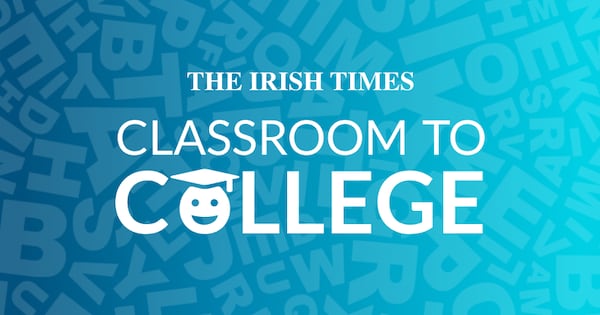The number of school-leavers from disadvantaged backgrounds progressing to college has climbed towards record levels.
The figures are contained in the 2024 Irish Times Feeder School list, which provides a school-by-school guide of progression rates to third level this year.
About 80 per cent of school-leavers nationally went to third level in 2024.
The proportion of college-going students from Deis schools – typically located in more economically deprived areas – has climbed to just over 64 per cent.
READ MORE
This is up from 57 per cent in 2019 and matches a record high of 63-64 per cent last recorded during the Covid pandemic, when students from Deis schools benefited to a greater extent from predicted grades.
Among the likely factors behind the increase include the creation of additional college places, the growth of technological universities in regional areas and access initiatives aimed at forging closer links between Deis schools and third-level colleges.
[ Feeder Schools 2024: How did your school and county perform?Opens in new window ]
To see all of our Feeder School tables broken down by gender and fee-paying and non-fee paying, scroll to the end of this page.
Overall, fee-charging schools sent the highest proportion of school leavers to third level (95 per cent), followed by Gaelcholaisti (94 per cent), non-Deis schools (82 per cent) and Deis schools (64 per cent).
When broken down by individual schools, the top-50 schools with the highest progression rates sent almost all their school-leavers to higher education.
Coláiste Chiaráin, Co Kildare, tops this year’s Feeder School 2024 list (with 76 per cent of their registered students going to traditional universities and 40 per cent to technological universities) It is followed by Presentation College, Cork; Coláiste Íosagáin, Co Dublin; Clochar Naomh Lughaidh, Co Monaghan; and Coláiste Eoin, Co Dublin.
Schools with the highest progression rates are typically based in more affluent areas. Researchers say factors such as family education levels and access to private supports, such as grinds, can help boost pupils’ performance.
Some schools recorded dramatic increases in the proportion of school-leavers who have gone to university over the past five years.
For example, third-level progression rates at Ballinode Community College, Sligo, jumped by the highest amount of any school between 2018 and 2024 (up 70 per cent). It is followed by Ardscoil Phádraig, Co Longford (51 per cent), Holy Child Community School, Sallynoggin, Co Dublin (49 per cent) and Adamstown Vocational College, Enniscorthy, Co Wexford (44 per cent).
This year’s Feeder School lists also show how the class gap in third-level participation persists, especially in Dublin postal districts.
For example, the most affluent parts of the capital, such as Dublin 6 – which includes Ranelagh – recorded third-level progression rates among school leavers of 95 per cent. This compares with college progression rates of 50 per cent in Dublin 10 – which includes Ballyfermot – and 55 per cent in Dublin 11, which includes Finglas.
The class gap is even more stark when the figures are broken down into those who sat the Leaving Cert in 2024 and secured places in traditional universities, which tend to have higher CAO entry requirements.
In Dublin 6, some 74 per cent of those who secured a third level place went on to a traditional university, compared with 50 and 51.7 per cent in Dublin 10 and 11.
The feeder school 2024 data does not capture the proportion of students who may have gone on to secure apprenticeships or places in further education. While The Irish Times has sought this information, education authorities say it is not systematically collected.
Overall, this year’s numbers cement Ireland’s exceptionally high third-level participation rate, which is among the highest in the world.
Ireland also continues to have one of the highest retention rates at second level across Europe, or the proportion of students who stay in school until the Leaving Cert.
- This article and associated tables have updated to correct errors in data originally supplied by UCD and UCC
- Follow The Irish Times education section on Facebook and X (Twitter) and stay up to date
















